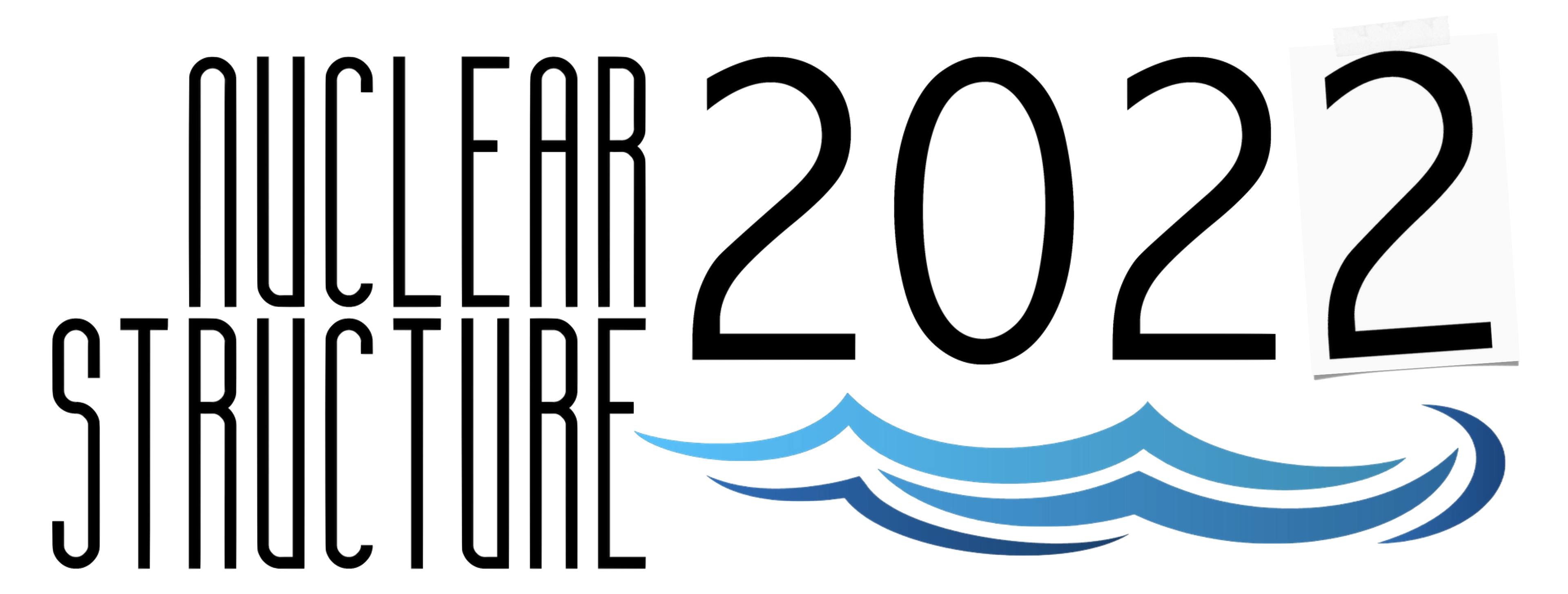Speaker
Description
Performing shell model calculations for heavy, deformed nuclei has been a challenging problem in nuclear physics. State-of-the-art many-body techniques, such as angular momentum projection (AMP) [1] and generator coordinate method (GCM) [2], are required. In this talk, we present two new developments of shell models with their potential applications. Both developments are benefited by the Pfaffian method proposed by Robledo [3] which helps to solve unambiguously the sign problem in the overlap of two HFB wavefunctions, making the GCM calculation possible for general triaxially-deformed cases.
In a collaboration with Japanese theorists, we have proposed the projected Hartree-Fock-Bogolyubov plus generator coordinate method (HFB+GCM). It starts from the variational calculation to minimize the particle number-projected energy of the HFB wave function with the effective Hamiltonian. The number-projected wave functions for a set of quadrupole moments Q0 and Q2 serve as generator coordinates in the GCM method. Total AMP is then applied, and energies and wavefunctions are finally obtained by solving the Hill-Wheeler equation [4]. Using this model, the sudden emergence of extremely large B(E2) in the N=Z mass-80 region is understood as a triple enhancement of quasi-SU(3) quadrupole collectivity [5].
In the effort to describe complete sets of nuclear spectra and to provide necessary nuclear input for astrophysical models and simulations, we have made progress in the extension of the projected shell model (PSM). It starts from a deformed basis, with the configuration space expanded to include up to 10-qp states for both positive and negative parities [6,7]. AMP technique is then applied to transform the states from the intrinsic to the laboratory one, and many-body wave functions are constructed by superposition of the projected multi-qp states. Thousands of levels including both normal and K-isomeric states with definite spin-parity can be obtained, and electromagnetic transition as well as Gamow-Teller -decay and electron-capture rates [8] can be calculated. Potential applications are for the study of excited nuclear states in astrophysical environments [9] and nuclear level density and chaoticity of nuclear systems [10,11].
Work is collaborated with K. Kaneko, N. Shimizu, T. Mizusaki, G. W. Misch, S. K. Ghorui, S. Garg, S. Dutta, L.-J. Wang, F.-Q. Chen, and supported by NNSF of China under contract No. U1932206.
[1] Y. Sun, Phys. Scr. 91 (2016) 043005.
[2] F.-Q. Chen, Y. Sun, P. Ring, Phys. Rev. C 88 (2013) 014315.
[3] L. M. Robledo, Phys. Rev. C 79 (2009) 021302.
[4] K. Kaneko, N. Shimizu, T. Mizusaki, Y. Sun, Phys. Lett. B 817 (2021) 136286.
[5] K. Kaneko, N. Shimizu, T. Mizusaki, Y. Sun, Phys. Rev. C 103 (2021) L021301.
[6] L.-J. Wang, F.-Q. Chen, T. Mizusaki, M. Oi, Y. Sun, Phys. Rev. C 90 (2014) 011303.
[7] L.-J. Wang, Y. Sun, T. Mizusaki, M. Oi, S. K. Ghorui, Phys. Rev. C 93 (2016) 034322.
[8] L. Tan, Y.-X. Liu, L. J. Wang, Z.- P. Li, Y. Sun, Phys. Lett. B 805 (2020) 135432.
[9] L.-J. Wang, L. Tan, Z.-P. Li, G. W. Misch, Y. Sun, Phys. Rev. Lett. 127 (2021) 172702.
[10] L.-J. Wang, J.-M. Dong, F.-Q. Chen, Y. Sun, J. Phys. G 46 (2019) 105102.
[11] L. J. Wang, F.-Q. Chen, Y. Sun, Phys. Lett. B 808 (2020) 135676.

